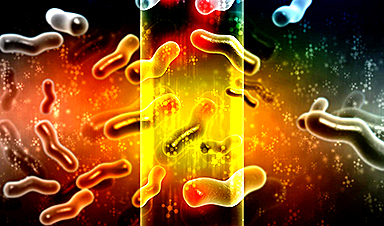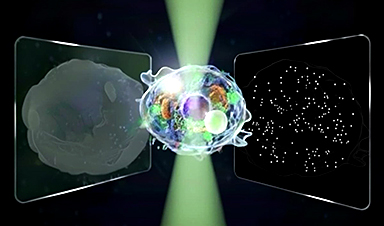Nanotechnology, Nanomedicine, and AI: Toward the Dream of Global Health Care Equivalency

![]()
“Progress in medicine, global access to information and a global age pyramid that is already turning upside-down will increase the demand for good health care. This in turn will increase life expectancy and drive innovation. This re-enforcing circle will change societies’ views on health care. Whereas today it is seen as a cost that needs to be controlled — which slows down progress — it might become the global driving force of innovation and humanity, replacing other areas of public investment focus.”
Harald Stock, President & CEO, ArjoHuntleigh
Introduction
We are very fortunate indeed to be living at a time where the speed of advances in medical technologies is such that we can expect to live increasingly healthier and longer lives; far beyond what would ever have been imagined as possible only a century ago. However, in contrast to our natural inalienable human rights to life, liberty, and the pursuit of happiness, our equally important right to good health (and by extension good health care), which is critical for all of us, is unfortunately either in disarray, dysfunctional, or completely neglected on a global scale.
The State of Health Care Today
A news item released on December 2017, by the World Health Organization (WHO) entitled: “World Bank and WHO: Half the world lacks access to essential health services, 100 million still pushed into extreme poverty because of health expenses”, reported that “800 million people spend at least 10 percent of their household budgets on health expenses for themselves, a sick child or other family member. For almost 100 million people these expenses are high enough to push them into extreme poverty, forcing them to survive on just $1.90 or less a day.” A 2017 report authored by Dr. Margaret Chan (Director-General, WHO) stated that “Nearly 2 billion people have no access to basic medicines, causing a cascade of preventable misery and suffering.” The current state of affairs in the developed world for those who are fortunate enough to have access to medical care, in some cases includes the burden of $1000 per dose, and from $100,000 to $1.21 million per year in individual drug expenditures alone.
What is Global Health Care Equivalency (GHCE)?
Looking ahead over the next 10-30 years, with the rapid emergence of, and synergies between, the disciplines of nanotechnology, nanomedicine, and AI, we can envisage a future world where any individual on the planet has access to the same advanced and cost effective nanomedical diagnostic and therapeutic technologies, no matter how wealthy or impoverished they are, no matter where they happen to reside, or under what conditions they live. Progress toward this goal will be incremental, with each successive wave of nanomedical technologies being more advanced than the previous wave. The tipping point will arrive with the emergence of Molecular Manufacturing (MM), http://ieet.org/index.php/IEET/more/boehm20160115, which will make possible the cost effective fabrication of the classes of advanced autonomous nanomedical devices that Boehm describes in his first book: Nanomedical Device and Systems Design: Challenges, Possibilities, Visions. A situation may then well arise where the entire human population will finally come to realize the inalienable human right of optimal health for life through the establishment of a worldwide health care system under the moniker: “Global Health Care Equivalency” (GHCE). The details and vision for GHCE will be articulated in an upcoming book: Nanotechnology, Nanomedicine, and AI: Toward the Dream of Global Health Care Equivalency that is currently being generated by the originator of this concept (Frank Boehm – CEO of NanoApps Medical Incorporated) in collaboration with numerous thought leading authors.
Perceived Benefits of GHCE
The attainment of GHCE might serve to significantly reduce the perception of individuals in the developing world of being marginalized, at least in terms of health care, which may ultimately translate to conflict reduction. In the developed world, GHCE would serve to dramatically reduce health care expenditures across the board. Progress toward this goal will be incremental, with each successive wave of nanomedical technologies being more advanced than the previous wave. The tipping point will arrive with the emergence of Molecular Manufacturing (MM), http://ieet.org/index.php/IEET/more/boehm20160115, which will make possible the cost effective fabrication of the types of advanced autonomous nanomedical devices that Boehm describes in his first book: Nanomedical Device and Systems Design: Challenges, Possibilities, Visions.
It is worth noting here that all nations on a global scale stand to benefit immensely when their citizens are healthy, as they would save hundreds of millions, if not billions of dollars in health-related expenditures, not to mention lost work hours and overall productivity, due to illness and its associated incapacities.
The core essence of GHCE is aptly conveyed in the thought below:
“In a world facing considerable uncertainty, international health development is a unifying – and uplifting – force for the good of humanity.”
Dr Chan, WHO Director-General
What is Molecular Manufacturing (MM)
The first mention of the possibility of MM emerged through the words of Dr. Richard Feynman in 1959, via his famous talk, “Plenty of Room at the Bottom”, where he spoke of the possibility of the controlled manipulation of matter at the atomic level. Dr. Eric Drexler described the remarkable capabilities that he envisioned for a conceptual molecular assembler in his 1986 book, Engines of Creation. In 2003, Chris Phoenix generated a paper that articulated the Design of a Primitive Nanofactory. Dr. Robert Freitas Jr. et al., have extensively investigated Diamond MechanoSynthesis and personalized Nanofactories from 2002 to the present.
Once MM is developed, it will have the capacity to fabricate just about any consumer item or food, as well as advanced autonomous nanomedical robots from elemental atoms and molecules, guided by AI-driven specifications. By virtue of these fundamental feed stocks, it will likely become very cost effective to fabricate (physician prescribed) nanomedical devices to address virtually any condition that ails us, in one’s own home, via Factory@Home (F@H) units, which might be manifest as countertop microwave-sized appliances that are extensively distributed worldwide. Concurrently, home based atomic and molecular “disassembly” units would be able to completely recycle, sort, and repackage practically any type of material according to its specific atomic and molecular species, which could again be used to supply the F@H units for fabrication.
Awaking the Dream
Although the attainment of GHCE would indeed be a truly extraordinary achievement, we must keenly recognize that in reality, such a massive undertaking on a global scale will require intense and sustained high spirited collaboration between like minded individuals who have widely varied backgrounds within diverse areas of expertise. Highly specialized laboratories, dynamic administrative institutions, regulatory bodies, and government agencies worldwide will also be vital prerequisites for its realization, as will significant resources and time. We are all amazing individuals, each with our own unique talents and expertise that might contribute and be applied to this noble enterprise. Our working together might culminate in a positive critical mass on a global scale toward the actual realization of GHCE, which would ultimately be of benefit for each and every one of us, as we are finally “all” supported in our natural human right of optimal health for life.
News
Novel mRNA therapy curbs antibiotic-resistant infections in preclinical lung models
Researchers at the Icahn School of Medicine at Mount Sinai and collaborators have reported early success with a novel mRNA-based therapy designed to combat antibiotic-resistant bacteria. The findings, published in Nature Biotechnology, show that in [...]
New skin-permeable polymer delivers insulin without needles
A breakthrough zwitterionic polymer slips through the skin’s toughest barriers, carrying insulin deep into tissue and normalizing blood sugar, offering patients a painless alternative to daily injections. A recent study published in the journal Nature examines [...]
Multifunctional Nanogels: A Breakthrough in Antibacterial Strategies
Antibiotic resistance is a growing concern - from human health to crop survival. A new study successfully uses nanogels to target and almost entirely inhibit the bacteria P. Aeruginosa. Recently published in Angewandte Chemie, the study [...]
Nanoflowers rejuvenate old and damaged human cells by replacing their mitochondria
Biomedical researchers at Texas A&M University may have discovered a way to stop or even reverse the decline of cellular energy production—a finding that could have revolutionary effects across medicine. Dr. Akhilesh K. Gaharwar [...]
The Stunning New Push to Protect the Invisible 99% of Life
Scientists worldwide have joined forces to build the first-ever roadmap for conserving Earth’s vast invisible majority—microbes. Their new IUCN Specialist Group reframes conservation by elevating microbial life to the same urgency as plants and [...]
Scientists Find a Way to Help the Brain Clear Alzheimer’s Plaques Naturally
Scientists have discovered that the brain may have a built-in way to fight Alzheimer’s. By activating a protein called Sox9, researchers were able to switch on star-shaped brain cells known as astrocytes and turn them into [...]
Vision can be rebooted in adults with amblyopia, study suggests
Temporarily anesthetizing the retina briefly reverts the activity of the visual system to that observed in early development and enables growth of responses to the amblyopic eye, new research shows. In the common vision [...]
Ultrasound-activated Nanoparticles Kill Liver Cancer and Activate Immune System
A new ultrasound-guided nanotherapy wipes out liver tumors while training the immune system to keep them from coming back. The study, published in Nano Today, introduces a biodegradable nanoparticle system that combines sonodynamic therapy and cell [...]
Magnetic nanoparticles that successfully navigate complex blood vessels may be ready for clinical trials
Every year, 12 million people worldwide suffer a stroke; many die or are permanently impaired. Currently, drugs are administered to dissolve the thrombus that blocks the blood vessel. These drugs spread throughout the entire [...]
Reviving Exhausted T Cells Sparks Powerful Cancer Tumor Elimination
Scientists have discovered how tumors secretly drain the energy from T cells—the immune system’s main cancer fighters—and how blocking that process can bring them back to life. The team found that cancer cells use [...]
Very low LDL-cholesterol correlates to fewer heart problems after stroke
Brigham and Women's Hospital's TIMI Study Group reports that in patients with prior ischemic stroke, very low achieved LDL-cholesterol correlated with fewer major adverse cardiovascular events and fewer recurrent strokes, without an apparent increase [...]
“Great Unified Microscope” Reveals Hidden Micro and Nano Worlds Inside Living Cells
University of Tokyo researchers have created a powerful new microscope that captures both forward- and back-scattered light at once, letting scientists see everything from large cell structures to tiny nanoscale particles in a single shot. Researchers [...]
Breakthrough Alzheimer’s Drug Has a Hidden Problem
Researchers in Japan found that although the Alzheimer’s drug lecanemab successfully removes amyloid plaques from the brain, it does not restore the brain’s waste-clearing system within the first few months of treatment. The study suggests that [...]
Concerning New Research Reveals Colon Cancer Is Skyrocketing in Adults Under 50
Colorectal cancer is striking younger adults at alarming rates, driven by lifestyle and genetic factors. Colorectal cancer (CRC) develops when abnormal cells grow uncontrollably in the colon or rectum, forming tumors that can eventually [...]
Scientists Discover a Natural, Non-Addictive Way To Block Pain That Could Replace Opioids
Scientists have discovered that the body can naturally dull pain through its own localized “benzodiazepine-like” peptides. A groundbreaking study led by a University of Leeds scientist has unveiled new insights into how the body manages pain, [...]
GLP-1 Drugs Like Ozempic Work, but New Research Reveals a Major Catch
Three new Cochrane reviews find evidence that GLP-1 drugs lead to clinically meaningful weight loss, though industry-funded studies raise concerns. Three new reviews from Cochrane have found that GLP-1 medications can lead to significant [...]















